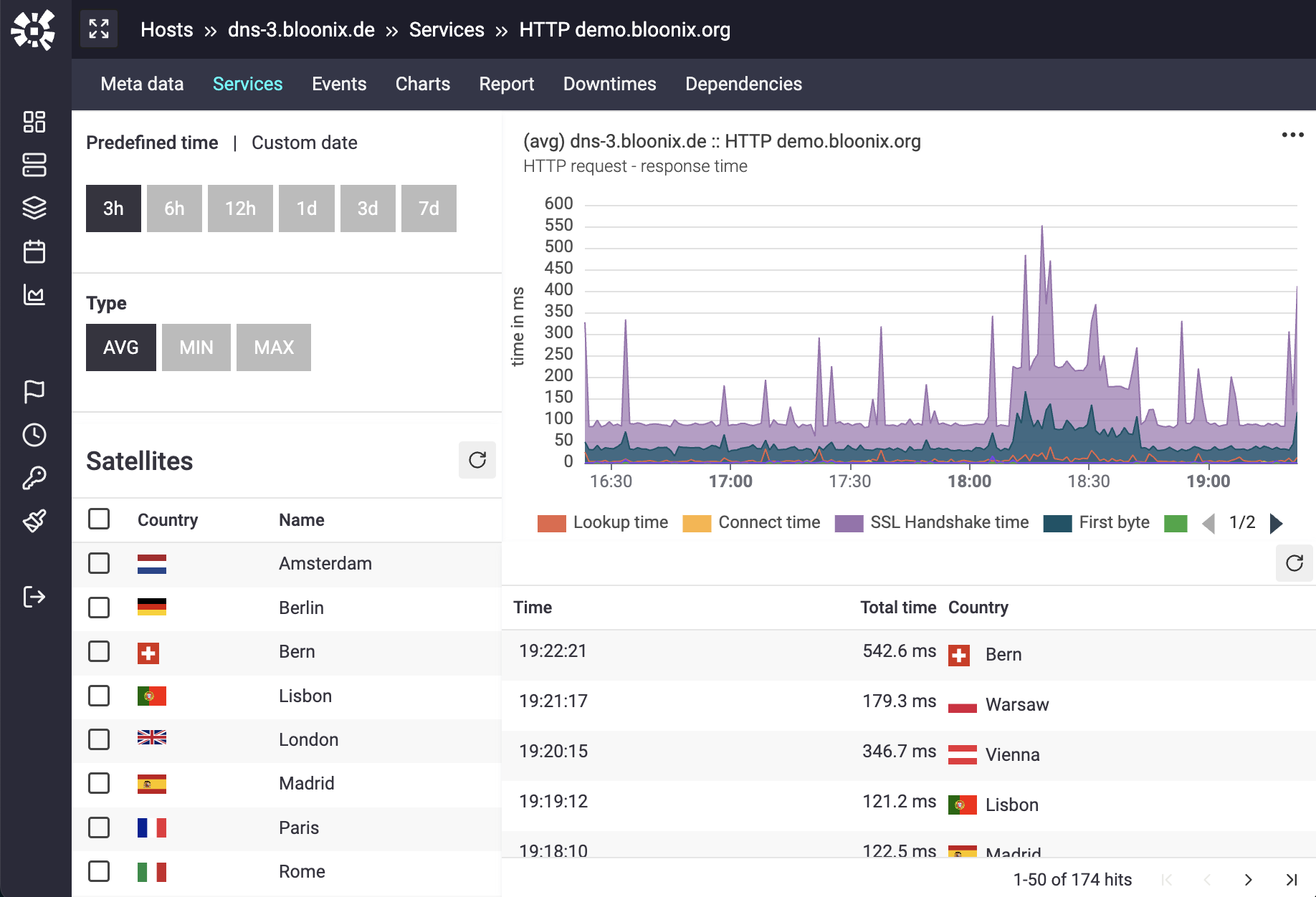How Bloonix Works
This document aims to explain in a very simple way how monitoring with Bloonix works.
With Bloonix, you can not only monitor system metrics from servers or services like MySQL, PostgreSQL, or Nginx, but also measure website performance using globally distributed satellites.
Bloonix-Server
Let’s start with the Bloonix-Server, which is the central component of the monitoring software. The Bloonix-Server can be installed on one or more machines in a cluster and monitors hosts, services, and websites that can be reached via a network connection:
Bloonix-Agent
To monitor system metrics directly on the target host—such as CPU usage, memory, disk capacity, or services like MySQL or PostgreSQL—you need the Bloonix-Agent. The agent is installed on the host to be monitored. To know what exactly to monitor, the Bloonix-Agent connects to the Bloonix-Server and requests the list of services to be checked:
Bloonix-Satellite
With the Bloonix-Satellite, web services can be monitored from locations around the world. Installing and setting up a satellite is very straightforward. The Bloonix-Server sends the monitoring checks to the satellites.
The response times can then be viewed via a dedicated dashboard:

Bloonix WebGUI
The Bloonix WebGUI provides a web interface that lets you manage everything conveniently through your browser. The WebGUI includes user management, password policies, and two-factor authentication.
Curious? Then check out our online demo at demo.bloonix.org.



